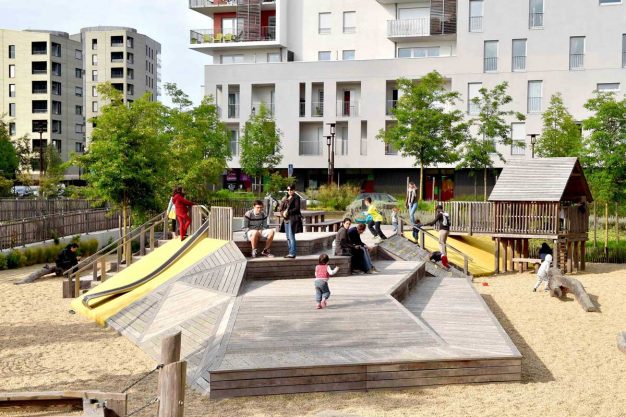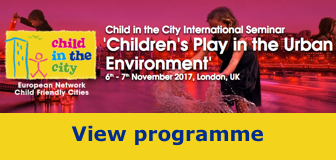
Defending the right to play – through research, policy and design
Anticipating our international seminar on children’s play in the urban environment, which starts on Monday 6 November, keynote speaker Dr. Sukanya Krishnamurthy talks about the importance of interdisciplinary and cross-sectoral collaboration for spatial planning to become more responsive to the needs and rights of city children to play.
What are the big issues for children’s play in the urban environment?
Cities can be fantastic places to grow-up in, offering culturally diverse environments, social networks, shorter commutes between work and home.
However, they also come with a variety of challenges for families with children, play being one those central challenges. Though the benefits of designated and undesignated play for the well-being of children has been well documented and advocated for, we still have a long way to go to ensure its structural (urban lifestyles, pace, reduced free play etc.) and spatial feasibility (equitable, contextual, etc.).
Following the current trend of global urbanisation, urban environments are becoming principal contexts wherein generations of children will thrive and grow. As professionals working in the urban field, we can argue for defending children’s right to play in cities by creating awareness through research, policy and design.
What are the barriers we must overcome?
In order for intentions to meet reality, both structural and social barriers need to be addressed. Structural barriers such as working in silos rather than as interdisciplinary teams, and social attitudes related to free-time and play need to be looked into further.
What are the themes of your presentation?
With the expanding reach of children’s studies within the social sciences, urban analysis is essential to improve contextual understanding of children’s contemporary problems and needs in the city. The quality of public space in urban and suburban spaces is crucial for physical, social and cognitive development of young children and as opportunities of outside play. We recently completed a study on the role urban design can play in realising child-friendly built environments in Eindhoven (NL) and Jerusalem (IL).
The role urban planning and design can have in research and realisation of children’s play is an area of immense potential.
I focus on the findings from the Netherlands about play in urban environments, and mechanisms we can use to highlight the potential and role of urban design. Through the use of quantitative and qualitative tools, community workshops, urban interventions, we worked to understand usage of space, differences between gender preferences, care-givers needs, etc. Through this process we are developing an assessment framework for possible urban design responses at the neighbourhood level.
How should municipal governments respond to children’s need for space to play?
There is a lot of knowledge and evidence-based research on the need for spaces to play. However, a lot of this knowledge gets retained within disciplinary and professional boundaries. By creating interdisciplinary partnerships, for example, between local governments and universities or other sector parties, we can enable exchange of information that is both local and global, and, importantly, evidence-based and contextual.
Are there areas of research that you would like to see developed?
The role urban planning and design can have in research and realisation of children’s play is an area of immense potential. Questions on the creation of relevant methods and approaches, responding to cultural and social concerns through spatial interventions, are some of the areas that urban planning and design can address.
What are your hopes for the Child in the City seminar
I’m anticipating the possibility to create new networks and learn from other researchers and professionals working on similar concerns is quiet exciting. I am looking forward to an active few days!
Sukanya Krishnamurthy is Assistant Professor of Urbanism and Urban Architecture at the Faculty of the Built Environment, Eindhoven University of Technology.
She was interviewed by Adrian Voce
Photo: Square Jacques de Bollardière, Nantes by J-D Billaud / Landezines






